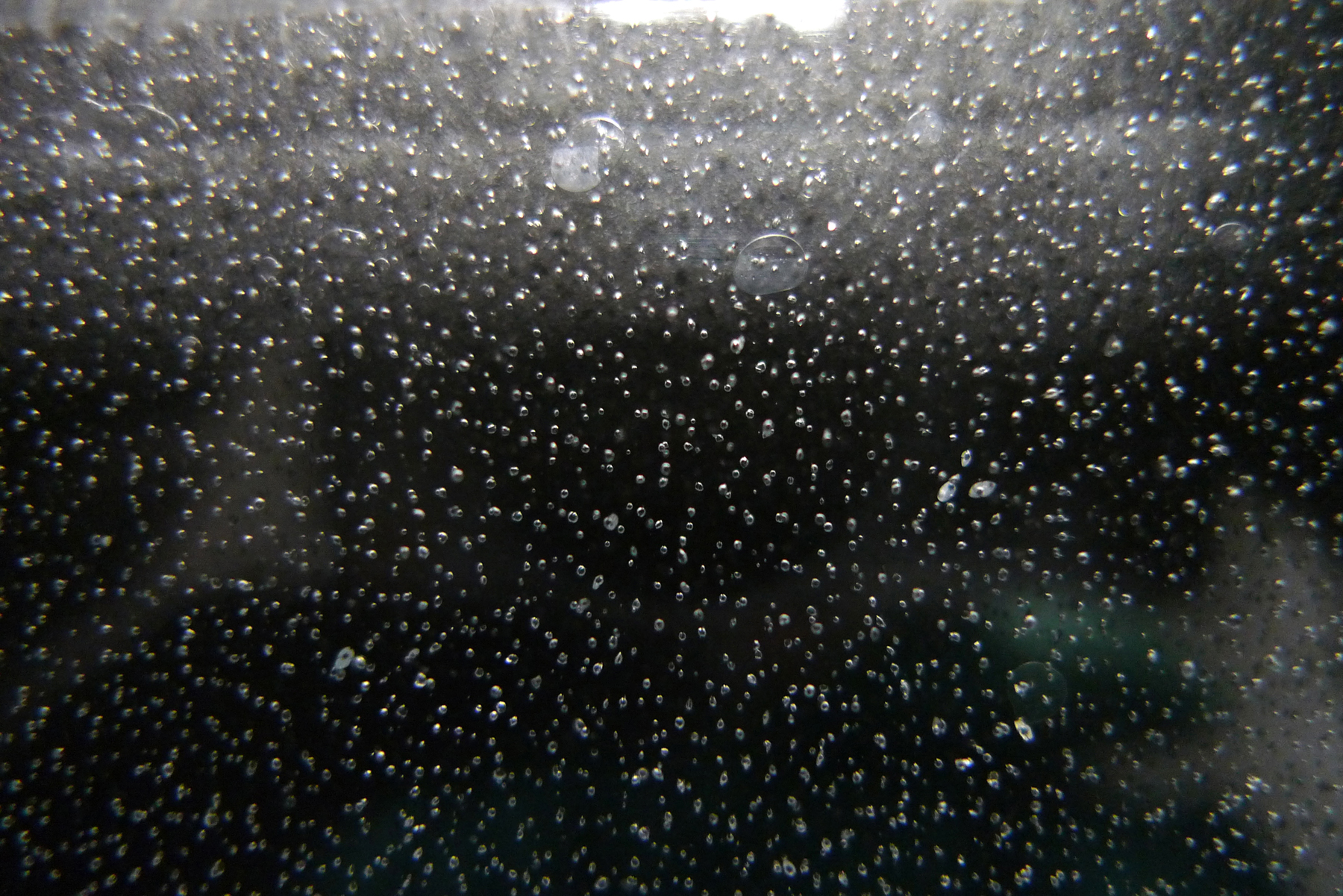Around 20,000 years ago, the atmospheric CO2 concentration was distinctly lower than in the following warm period, showed measurements from Antarctic ice cores. An international team of glaciologists looked even further back and found that the close connection between carbon dioxide and temperature has existed over the past 800,000 years: with low CO2 concentrations during the Ice Ages and higher CO2 values during warm periods.
They also wanted to find out where the carbon dioxide was hidden during those Ice Ages and how it got back into the atmosphere at their ends.
CLICK FOR LARGER SIZE. The enclosed air in this ice core dates back several millennia. The analysis of its compounds allows conclusions regarding for example carbon dioxide contents in geological history. Photo: Sepp Kipfstuhl, Alfred Wegener Institute
“We have now been able to identify processes in the ocean which are connected to the observed rise in CO2“, says Dr. Jochen Schmitt, lead author of the study and researcher at the Oeschger Centre for Climate Change Research at the University of Bern. According to Schmitt, during the Ice Age more and more carbon dioxide accumulated in the deep ocean, causing the concentration of atmospheric CO2 to drop. Only at the end of the Ice Age this stored CO2 was transported back to the sea surface through changing ocean circulation and thus emitted back into the atmosphere.
A new method for isotope measurements has now made it possible for the first time "to reliably decode the fingerprint of the CO2 preserved in the ice“, explains Schmitt. He and his colleague Prof. Hubertus Fischer initially developed these new isotope measurement methods for ice cores at the Alfred Wegener Institute for Polar and Marine Research and further refined them in many years of research work after moving to Bern. Using the new method the glaciologists extract the air trapped in the ice core completely and the CO2 contained in the air is thoroughly cleaned. The different isotopes of the CO2 are analysed in a mass spectrometer and from this data the origin of the carbon dioxide can be derived.
Researchers suggested back in the eighties that this puzzle could be solved using an isotopic "CO2 fingerprint“. However, it had not been possible to make a precise analysis of the carbon dioxide trapped in the Antarctic ice due to the technical hurdles.
"The new data have already enabled us to revise and improve a few theories about the possible reasons for CO2 fluctuations. Measurement data from the past enable us to gain a clearer idea about how the climate must have looked at the end of the Ice Age“, says Jochen Schmitt. And now the data must be compared with the results from climate models to verify and further develop the models. “In addition to the scientific curiosity about how our Earth functioned in the past, the main question to be asked is how the Earth will develop under the influence of man“, explains Jochen Schmitt. These are important scenarios for the future because the CO2 content in the atmosphere has never been anywhere near as high over the past 800,000 years as today, says the climate researcher.
Citation: Jochen Schmitt, Robert Schneider, Joachim Elsig, Daiana Leuenberger, Anna Lourantou, Jérôme Chappellaz, Peter Köhler, Fortunat Joos, Thomas F. Stocker, Markus Leuenberger&Hubertus Fischer. Carbon Isotope Constraints on the Deglacial CO2 Rise from Ice Cores. Science Express, 2012





Comments